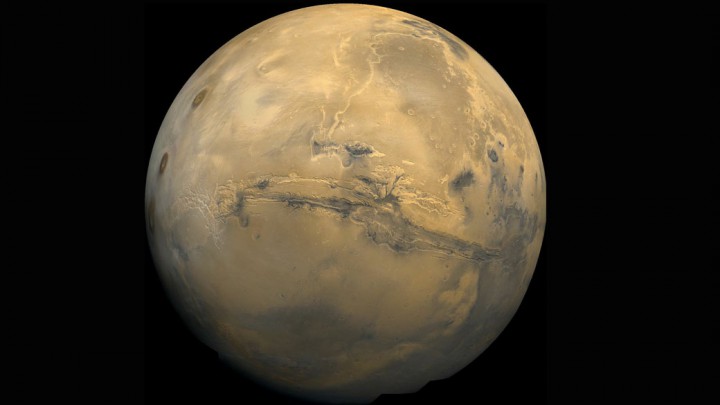TORONTO – Instead of relying on the Canadian Space Agency, a private company has started an Indiegogo campaign to get a lander and rover on Mars. Their names? Northern Light and Beaver. You can’t get more Canadian than that.

Thoth Technology, a Canadian company based in Pembroke, Ontario, specializes in space systems and technology. They have two instruments in orbit, including a micro-spectrometer. They also have instrumentation on a Canadian satellite that was launched in 2008 as well as an Indian satellite.
READ MORE: Canada contributing to telescope involved in search for extraterrestrials
But in order to get beyond Earth’s orbit, the tech company decided to turn to crowd-funding.
The Indiegogo campaign was started on Nov. 4.
Commercial space exploration is in its infancy, with private companies like SpaceX and Virgin Galactic leading the charge.
“Space exploration isn’t really a commercial market yet,” said Ben Quine, a professor of space engineering at York University and Thoth’s chief technolgoy officer. “It’s basically done by countries’ space agencies. What we thought is, commercially, we could innovate the tools to do things like planetary exploration, and we can do that in a commercial setting and massively reduce the cost of access to that.”
- Alberta tech company Wyvern hopes to build a better Earth from space
- Amazon’s stock value has crossed US$2 trillion, driven by AI investments
- Starliner astronauts’ return home delayed once again, still docked at ISS
- Maximum-security prison that held killers Magnotta, Pickton evacuated due to wildfires
Thoth plans to piggy-back their small compact Mars lander, Northern Light aboard a craft already heading to Mars.
Thoth isn’t the first company to explore commercial ventures in space. Vancouver’s Urthecast used a similar model, sending hi-definition cameras to the space station aboard a Russian rocket.
READ MORE: Vancouver-based UrtheCast has big plans for cameras on space station
Aboard Northern Light would be a “micro-rover,” called Beaver. Together they would explore the Martian environment, including collecting data on the atmosphere of the red planet, its surface and even subsurface. It would be able to operate about one kilometre from the lander. Eventually, the data collected could be made commercially available.
Of course, sending a lander to Mars is one thing, but collecting the data is another. Enter the Algonquin Radio Observatory (ARO), Canada’s largest radio telescope.
In 2007, Thoth assumed operations of the 46-metre telescope located in eastern Ontario.
Quine said that that’s just one of the ways in which they’ve been able to reduce costs. Instead of needing billions of dollars in capital to build a radio telescope, they already had one that is capable of communicating with Mars.
So, why Mars?
“Mars is the only other planet we can live on in the solar system,” he said. “Colonizing another planet in the future has to be one of our goals.”
As of Nov. 6, the Indiegogo campaign had raised nearly $2,600 of it’s $1.1 million goal. Does Quine think it’s possible.
“Oh, yes. Definitely.”



Comments